Jaguar’s Ian Callum on his new design consultancy, favourite cars, and David Bowie

Ian Callum is one of the most respected contemporary vehicle designers. Last month he stepped down as Jaguar’s creative director to start his own design and engineering business, suitably called Callum, leaving Julian Thomson, Jaguar's former head of advanced design, at the helm.
In his 20 years at Jaguar Callum was instrumental in completely redefining the marque’s design course, and for envisaging products that led to global success and recognition. In particular, the two-seater F-Type became a worthy contemporary successor to the iconic E-Type, while the The F-Pace and E-Pace were timely products that introduced Jaguar customers to the popular SUV sector. Most provocatively, the I-Pace saw the marque take on electrification with design confidence. Perhaps time was ripe to move. ‘You know there is never a right time to go, you just have to do it, and at the age of 65 it felt right,’ he explains. ‘I’ve been in the corporate world for so long that I needed to get involved in making other stuff – not only cars.’
A post shared by Ian Callum (@iscallum)
A photo posted by on
Callum spent the first 12 years of his career at Ford where, amongst other cars, he sketched the popular Puma coupé. Then as chief designer of TWR Design, he was responsible for the Aston Martin DB7, Vanquish and the early stages of the DB9. When he entered Jaguar Land Rover in 1999, the company was in a very different place. Under Ford ownership, the two brands were struggling with their identities. This was a new beginning though, as the new parent company, Tata Motors, offered creative freedom. Callum and Land Rover’s Gerry McGovern thus set about completely reshaping the two.
Called simply ‘Callum', the new company has 20 employees operating from a fully-functioning 20,000 ft sq facility in Warwick, England. Callum is familiar with the Midlands and feels there is enough skills here to make things happen. Equally he talks passionately of supporting British craft and making his products locally. He says the firm will engage with school kids and create apprenticeships.
The studio will focus primarily on bespoke and limited-edition products across design, lifestyle and travel. ‘I would love to do baggage and leather goods, the obvious stuff like watches, maybe even clothing. I want to test myself,’ he says. There are projects in the pipeline that he cannot discuss, but altogether the business will follow an organic process. ‘One thing I know,’ he adds, ‘is that everything has to have a story and a soul.’
This feels like quiet a departure for Callum who ran a team of some 500 designers and modellers at Jaguar. Is he escaping the corporate world? He replies candidly: ‘JLR got so large! I had achieved my objectives. JLR has more of an engineering bias now, more of a pragmatic outlook.’
Ian Callum's top five cars (in no particular order):
1. The DB7 shaped Aston Martin’s design for the next 20 years
2. The C70 coupé was sketched whilst at TWR Design to challenge classic Volvo design
3. The F-Type became the first two-seater sports car for Jaguar since the E-Type
4. Jaguar’s C-X75 hybrid-electric performance car never reached production but made it to the set of James Bond’s Spectre
5. Jaguar’s first electric car, the I-Pace challenged conventional vehicle design
One of the biggest highlights of his career at Jaguar was creating the XF saloon. ‘It was a significant turning point in our story,’ he says. ‘The F-Type was also a dream come true for me.’ His biggest regret is not producing the C-X75 hybrid-performance prototype. He admits he will continue to design cars, but only electric vehicles. Coachbuilding, he says, will return to the auto scene especially as it is easier to base new car models on an electric platform. ‘This opens up huge possibilities. There is a market for bespoke vehicles. As you move up the luxury chain, cars will need to become more and more individual, and we are there to cater for this group.’
Asked who he admires creatively and Callum says David Bowie. ‘He was creative until the very end. You have to get your stuff out before it’s too late, and you have to prove to yourself you’re still on-top.’ As a departing note, he says the electric I-Pace was a significant car for him. It created the opportunity to do something innovative that would challenge the perception of Jaguar. ‘It was a starring role for my exodus. I almost left immediately afterwards,’ he smiles.
INFORMATION
Wallpaper* Newsletter
Receive our daily digest of inspiration, escapism and design stories from around the world direct to your inbox.
A writer and editor based in London, Nargess contributes to various international publications on all aspects of culture. She is editorial director on Voices, a US publication on wine, and has authored a few lifestyle books, including The Life Negroni.
-
 10 books culture editor Hannah Silver recommends this winter
10 books culture editor Hannah Silver recommends this winterLacking inspiration over what to read next? Wallpaper* culture editor, Hannah Silver, shares her favourite books
By Hannah Silver Published
-
 Midtown Manhattan restaurant Ánimo! takes its cues from Mexican morning rituals
Midtown Manhattan restaurant Ánimo! takes its cues from Mexican morning ritualsDesigner Jordana Maisie creates a minimalistic yet referential setting for Ánimo!
By Adrian Madlener Published
-
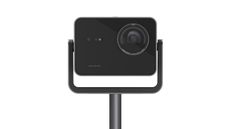 First look: Leica Cine Play 1 brings premium style and tech to the world of home cinema
First look: Leica Cine Play 1 brings premium style and tech to the world of home cinemaLeica compresses its meticulous optic know-how into the ultra-compact Cine Play 1 4K projector
By Jonathan Bell Published
-
 Helm’s meticulously re-imagined Jaguar E-Type features a finely crafted interior by Bill Amberg
Helm’s meticulously re-imagined Jaguar E-Type features a finely crafted interior by Bill AmbergHelm transforms the legendary E-Type into a thoroughly modern machine, upgrading every aspect of Jaguar’s pioneering sports car to an exacting brief
By Jonathan Bell Published
-
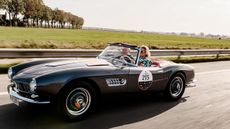 Zoute Grand Prix is a car fest like no other at a pristine Belgian beachside town
Zoute Grand Prix is a car fest like no other at a pristine Belgian beachside townAmy Serafin takes to the well-heeled streets of Knokke-Heist to experience the Zoute Grand Prix, its annual cavalcade of classic car-related events, from a rally to an auction
By Amy Serafin Published
-
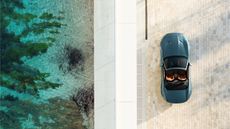 Jaguar F-Type 75 special edition is the last of its kind as the marque hints at a radical future
Jaguar F-Type 75 special edition is the last of its kind as the marque hints at a radical futureThe Jaguar F-Type 75 will be the last ever V8-powered Jaguar; is it also the end of conventional sports cars for this legendary British marque?
By Jonathan Bell Published
-
 The first all-electric Jaguar is currently an endangered species
The first all-electric Jaguar is currently an endangered speciesThe Jaguar I-Pace, launched four years ago, remains one of the best EVs to drive, yet is still the company’s only all-electric car. What’s Jaguar’s next move?
By Jonathan Bell Published
-
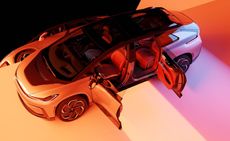 Faraday Future’s design director on the cutting-edge FF 91 EV
Faraday Future’s design director on the cutting-edge FF 91 EVFaraday Future design director Page Beermann discusses the joy of clean-sheet design for the FF 91 electric vehicle – ‘simultaneously an intelligent supercomputer and an extreme performance vehicle’
By Jonathan Bell Last updated
-
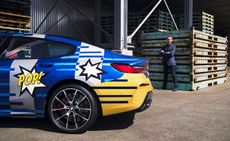 ‘Pop! Pop! Pop!’: Jeff Koons on the drive behind his new limited-edition BMW 8 Series
‘Pop! Pop! Pop!’: Jeff Koons on the drive behind his new limited-edition BMW 8 SeriesWe speak to Jeff Koons about blending pop, performance and punch in his design for the BMW M850i xDrive Gran Coupé
By Nick Compton Last updated
-
 Genesis’ Luc Donckerwolke brings new shapes to luxury mobility
Genesis’ Luc Donckerwolke brings new shapes to luxury mobilityLuc Donckerwolke, Genesis’ chief brand officer and chief creative officer, on its Europe-only G70 Shooting Brake, the new Genesis EV60 electric vehicle, and the shape of cars to come
By Jonathan Bell Published
-
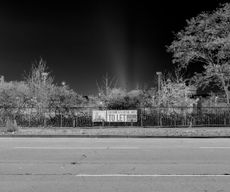 Through the lens of photographer Milo Lethorn
Through the lens of photographer Milo LethornHere, Milo Lethorn discusses the eroding perceptions of photographic ‘truth’, the marketisation of higher education, and pushing the boundaries of genre
By Sophie Gladstone Last updated